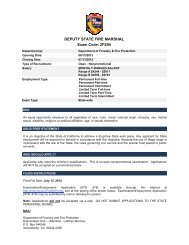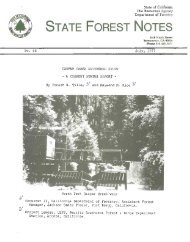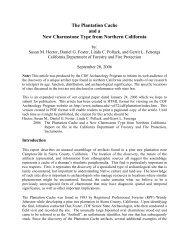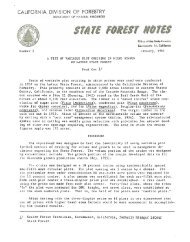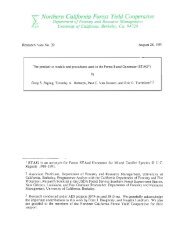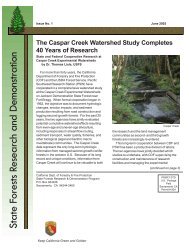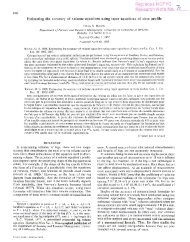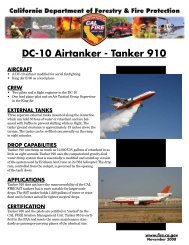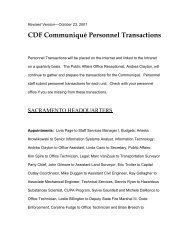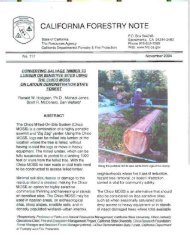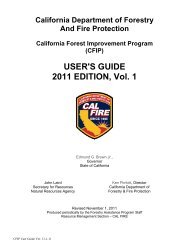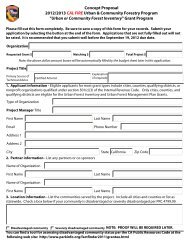You also want an ePaper? Increase the reach of your titles
YUMPU automatically turns print PDFs into web optimized ePapers that Google loves.
CFES2 – <strong>California</strong> Fire Economics Simulator<br />
The <strong>California</strong> fire economics simulator is essentially a competition between how<br />
fast fires expand with how fast fire agencies can deploy resources to build fireline<br />
around the fire to contain it. If the ‘fire’ wins, we have an escaped fire that<br />
requires additional resources and time to put it out. If the ‘fire agency’ wins, the<br />
fire is suppressed with a specific estimate <strong>of</strong> resources required.<br />
How fast the fire expands is mainly a function <strong>of</strong><br />
1) the type <strong>of</strong> fuel (ex. shrubs burns a lot hotter and with greater intensity<br />
than grass) and<br />
2) the fire weather (ex. hot and windy days drive fires faster).<br />
How many resources the fire agencies can deploy to make fireline is mainly a<br />
function <strong>of</strong><br />
1) how many resources are available (engines with crews, dozers, hand<br />
crews)<br />
2) how long it takes it to be deployed on the fireline (travel time from various<br />
fire stations, set up time)<br />
3) how many structures are near the fire (this is the primary responsibility <strong>of</strong><br />
local fire engines but in practice local fire engines, and CDF engines will<br />
be assigned in the order they arrive at the fire, not by statutory<br />
responsibility. The number and location <strong>of</strong> local fire engines is a key<br />
component <strong>of</strong> CFES2)<br />
4) how fast different resources (engines, dozers, hand crews) can put in<br />
fireline in different vegetation types (forest and shrub require more work<br />
per linear foot <strong>of</strong> fireline than grass) and terrain (steep terrain preclude the<br />
use <strong>of</strong> many vehicles)<br />
A simulation model based on thousands <strong>of</strong> runs accounting for different fuel,<br />
weather, and number <strong>of</strong> simultaneous fires is more accurate than historic<br />
averages because <strong>of</strong> the very high year to year variability in the type <strong>of</strong> fire<br />
events that make up <strong>California</strong>’s fire seasons. The accuracy <strong>of</strong> the model is<br />
tested by calibrating the model results with historic resources and historic fire<br />
starts. The simulation model then allows CDF to do ‘what if’ scenarios <strong>of</strong> more<br />
resources, less resources, moving stations to new locations, changes in fire<br />
weather, broad changes in fuel conditions, etc. The current statewide CFES2<br />
runs are currently based on an extrapolation from CDF units where all data has<br />
been recently updated and verified. The financially relevant estimate <strong>of</strong> the cost<br />
<strong>of</strong> the fires that exceed initial attack resources is the sum <strong>of</strong> the number <strong>of</strong><br />
escapes from CFES2 multiplied by the costs per escaped fire that is taken from<br />
empirical cost data.<br />
The Full online manual is available at<br />
http://webmain02/Library/cfes2/CFES2_Procedures.htm<br />
A simple animation <strong>of</strong> the process is available at




